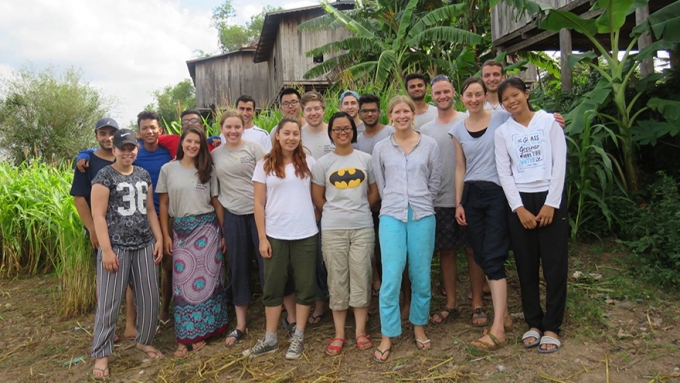My name is Sarah, and I’m starting my second year of the Bachelor of Engineering (Research and Development) and a Bachelor of Business Administration.
This January, I travelled to beautiful Cambodia with university students from across Australia to partake in an Engineers Without Borders (EWB) Humanitarian Design Summit, with funding from the Australian Government’s New Colombo Plan.
EWB is a non-profit organisation that empowers disadvantaged communities nationally and abroad by implementing sustainable engineering projects that improve quality of life.
The Design Summit program is an educational study tour that runs for an intense two weeks, combining work experience with cultural immersion. It’s all about getting involved with communities first-hand, and putting humanitarian engineering into practice.
Our journey began in the capital of Cambodia, Phnom Penh, where we participated in workshops to prepare us for the rest of the trip focussing on development and human-centred design, and excursions throughout the city.
You’ve probably heard the proverb, “if you give a person a fish you feed them for a day, but if you teach them to fish you can feed them for a lifetime.”
Essentially, what these workshops taught us was that you should first ask the person whether they would actually like to learn to fish, or if there is another skill they already have and would like to improve.
At the end of the week of workshops and excursions in Phnom Penh, we travelled to the Kratié Provence in northeast Cambodia to begin our community visits in collaboration with a local non-government organisation, the Cambodia Rural Development Team.
We were split into groups, and sent to different islands in the area. My group spent four days living in a village of about 300 people on the island Koh Chraeng on the Mekong River.
Whilst with the village, our team was tasked with investigating how to improve the learning environment for the children in the village.
A lot of our time was spent in discussions, facilitated by translators, with various groups including community leaders, women, elders, farmers, and teachers.
We discovered that class hours were limited throughout the year by heat and flooding, so we decided to develop a way to take learning outside.
By working through the processes of human-centred design, we designed a “Learning Playground” that could be built with cheap and locally sourced materials and with little construction experience.
After our stay on the island, we headed back to the rural centre Kratié, where we presented our concepts and prototypes back to representatives from our communities and our peers. Although our idea was simple, the representatives really liked our prototypes and even spoke to us about how and where they’d like to build them!
I don’t think I can yet quantify the positive impact that this experience will have on my studies. But right now, I’m drawing upon the things I learnt for my research project this semester, and I hope to continue to incorporate humanitarian engineering into my degree.
It should come as no surprise that I highly recommend the Summit to any student interested in development, problem-solving and meeting amazing people in a developing context – regardless of your degree!
Interested in the next EWB Humanitarian Design Summit. Click here for more information.

